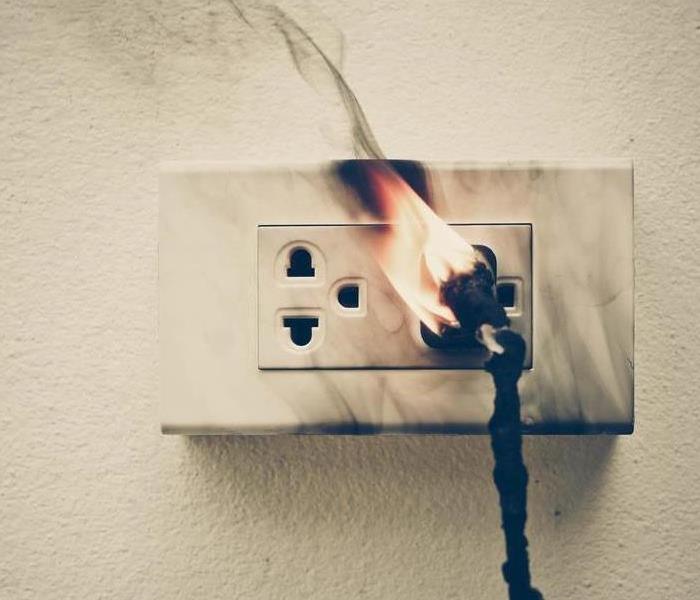What to Throw Away After a Fire: A Guide to Post-Fire Cleanup
4/12/2023 (Permalink)
 It is important to work with a professional fire damage cleanup company to ensure that all contaminated items are repaired or disposed of safely.
It is important to work with a professional fire damage cleanup company to ensure that all contaminated items are repaired or disposed of safely.
The aftermath of a fire can be devastating, leaving behind a trail of destruction, smoke, soot, and toxic chemicals. In this blog, we will discuss the items that should be thrown away after a fire to ensure the safety of you and your family.
Section 1: Food and Perishables
The first thing that should be thrown away after a fire is any food that was exposed to smoke or heat. Even if the food is sealed or packaged, it can still be contaminated by toxic chemicals or bacteria.
Section 2: Clothing and Textiles
Clothing and other textiles should also be thrown away if they have been exposed to smoke or soot. Smoke and soot can penetrate fabrics and become trapped, making it difficult to remove the odor and stains.
Section 3: Furniture and Household Items
Furniture and other household items should also be thrown away if they have been damaged beyond repair by fire or smoke. This includes sofas, chairs, mattresses, and other upholstered items.
Section 4: Electronics and Electrical Items
Electronics, appliances, and other electrical items should also be thrown away if they have been exposed to fire or smoke.
Section 5: Medications and Cosmetics
Medications and cosmetics should also be thrown away if they have been exposed to heat or smoke.
Section 6: Severely Damaged Items
Finally, any items that are severely damaged or charred should be thrown away. These items may be beyond repair and may pose a safety hazard if kept.
Section 7: Proper Procedures for Disposal
When disposing of items after a fire, it is important to follow proper procedures to ensure that they are disposed of safely and in compliance with local regulations.
Section 8: Cleaning and Disinfecting Salvageable Items
It is important to thoroughly clean and disinfect any items that can be salvaged after a fire. This includes dishes, utensils, and other kitchen items, as well as non-porous surfaces such as countertops and flooring. For porous items such as clothing, bedding, and curtains, it is best to have them professionally cleaned. By taking these steps, you can salvage some of your belongings and ensure that they are safe to use.
Section 9: Preventing Future Fires
Taking steps to prevent future fires is an important part of the post-fire cleanup. One of the most important steps is to install smoke detectors in every room of your home and ensure they are in proper working order. It is also important to have a fire escape plan and practice it regularly with your family. Additionally, make sure that all electrical wiring and appliances are up to code and properly maintained. Avoid using flammable materials and chemicals inside your home, and always extinguish cigarettes and candles properly. By taking these precautions, you can reduce the risk of a future fire and protect your family and property.
In conclusion, it is important to work with a professional fire damage cleanup company to ensure that all contaminated items are repaired or disposed of safely and properly. By taking these steps, you can restore your property to its pre-fire condition and ensure the safety of your family.





 24/7 Emergency Service
24/7 Emergency Service